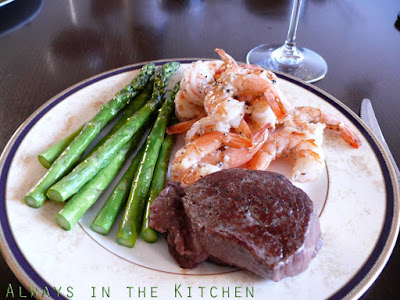 Should I explain the name? Well, I'll try: Maybe it's because I'm soon going to be attending a pirate-themed party, and maybe it's because I've still got the image of Johnny Depp's Jack Sparrow burned into my retinas, and maybe it's because I sort of highjacked the original recipe from the inimitable Alton Brown. Maybe it's just that the changes I made all sort of smacked of the Caribbean, and while I know there is more to that culture than pirates (cue Johnny Depp, again), it just sounded kind of fun.
Should I explain the name? Well, I'll try: Maybe it's because I'm soon going to be attending a pirate-themed party, and maybe it's because I've still got the image of Johnny Depp's Jack Sparrow burned into my retinas, and maybe it's because I sort of highjacked the original recipe from the inimitable Alton Brown. Maybe it's just that the changes I made all sort of smacked of the Caribbean, and while I know there is more to that culture than pirates (cue Johnny Depp, again), it just sounded kind of fun.But, really? It's very, very good. Lightly sweet, satisfyingly crunchy, and easy to make.
I did, in fact, start with Alton's ratios, but because I don't like my granola to be too sweet, I cut down on the amount of sugars going into this by quite a bit. Once I decided to use rum syrup instead of maple syrup, well, that along with the coconut was really the start of the theme. I added pumpkin seeds in place of one of the types of nuts that Alton used, and this was a good thing, because a well-toasted pumpkin seed is a delicious addition to many a snackfood.
This recipe is rather goody-heavy. It's not like those sad bags you can see in some markets which are ninety-five percent oats and sugar, with a few stray-looking nuts or raisins. This granola is laden with, ahem, booty. While it's not in the picture, I later added some banana chips, although I've since become horrified at the fat content of those, and won't be repeating that adjustment.
Pirate Granola
Severely adapted from a recipe looted from Alton Brown
3 cups old fashioned rolled oats
1 cup very roughly chopped almonds
1 cup raw pumpkin seeds
3/4 cup shredded unsweetened coconut
2 tablespoons golden brown sugar
1/4 cup rum syrup (recipe follows)
2 tablespoons blackstrap molasses
1/4 cup canola oil
1/2 teaspoon kosher salt
1 cup raisins (chopped dates would also be good)
Preheat oven to 275 degrees F.
In a large bowl, combine the oats, nuts, pumpkin seeds, coconut and brown sugar.
In a separate bowl, combine the molasses, rum syrup, oil and salt, and stir well. Combine both mixtures and stir until thoroughly integrated. Pour onto one or two large, foil-lined (and oil-spritzed) sheet pans. Cook for about 1 hour and 30 minutes, stirring gently every 30 minutes to achieve an even colour.
Remove from oven and transfer to a large bowl. Add raisins and mix until evenly distributed. Once cool, seal in an air-tight container and keep unrefrigerated.
Yield: approximately 7 cups
Exellent as a topping for yoghurt, as a breakfast cereal, or - my favourite - as a coffee-break snack! I just pour a bit into a mug, sit at my desk, and much while I'm working, surfing, or typing.
Rum Syrup
1 cup brown sugar, not packed
1/2 cup water
2 teaspoons rum extract
Combine sugar and water in small saucepan on stovetop, over a medium heat. Allow it to come to a gentle boil, and allow to cook until all sugar is dissolved. Remove from heat, and add extract. Allow to cool, bottle, and refrigerate. Excellent on pancakes, or over ice cream.

















